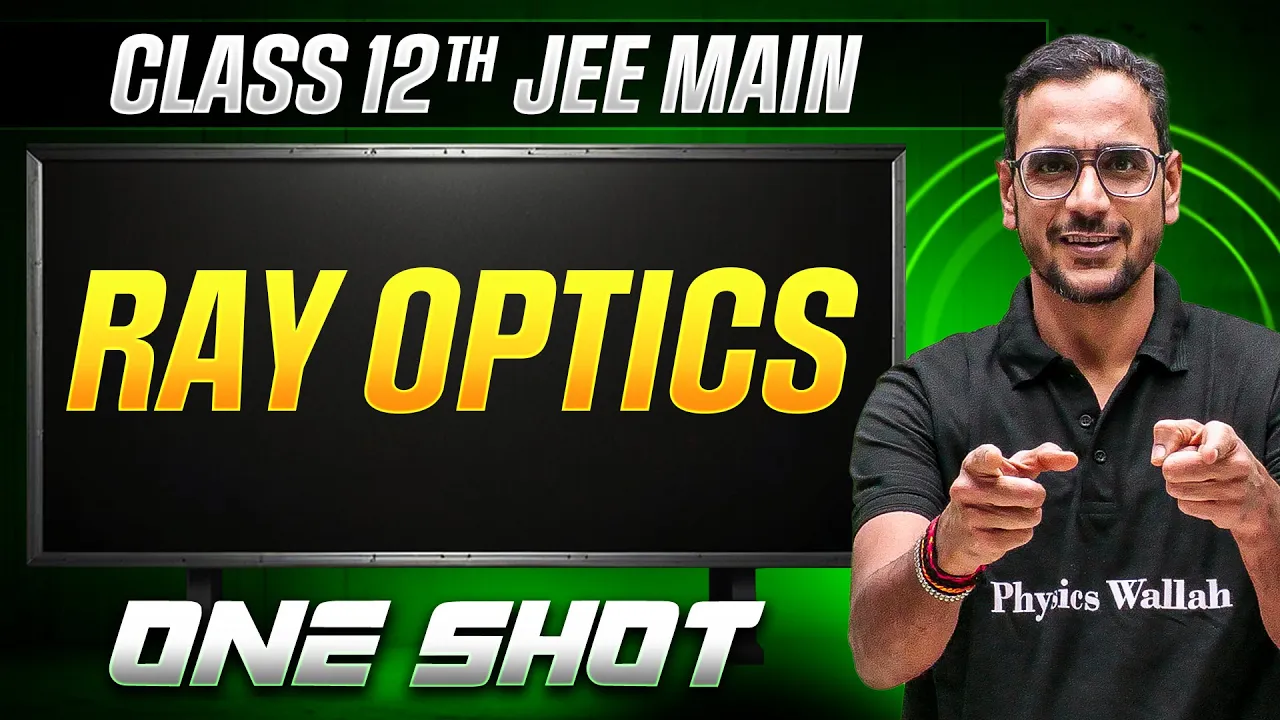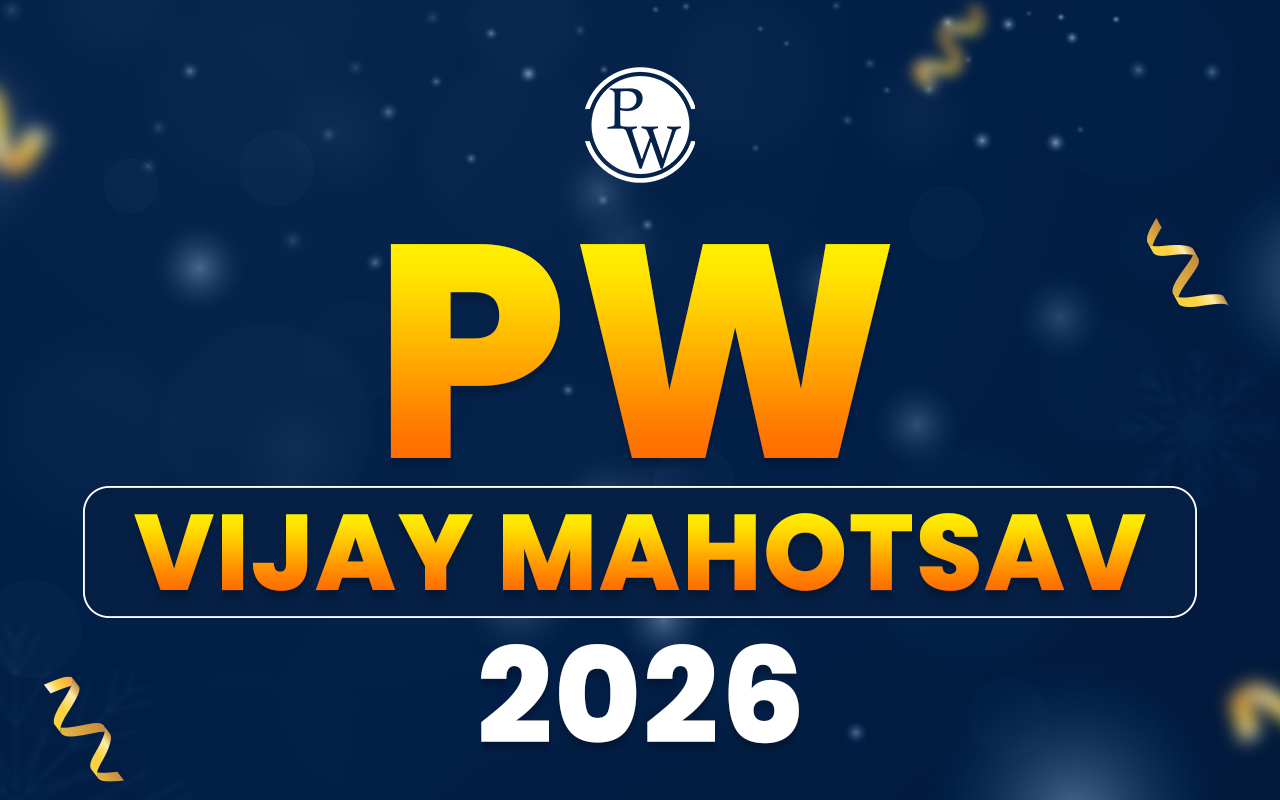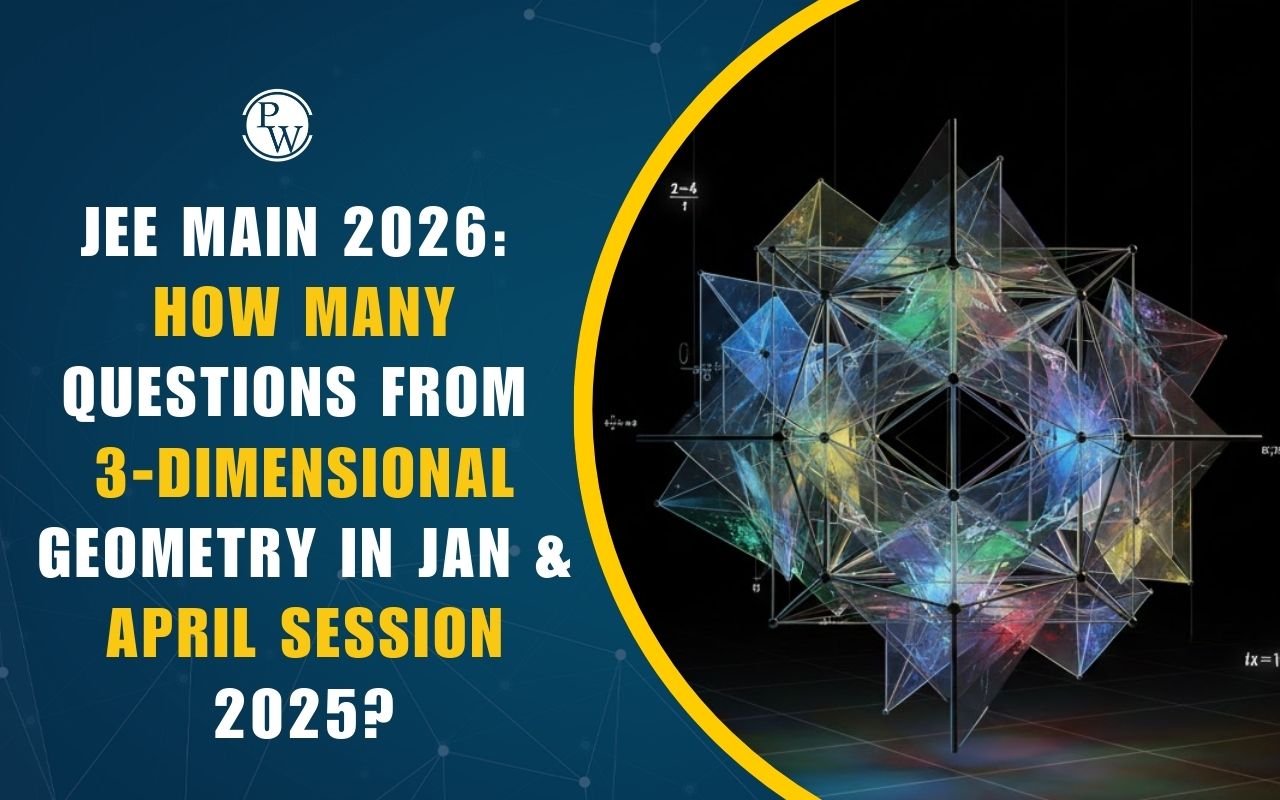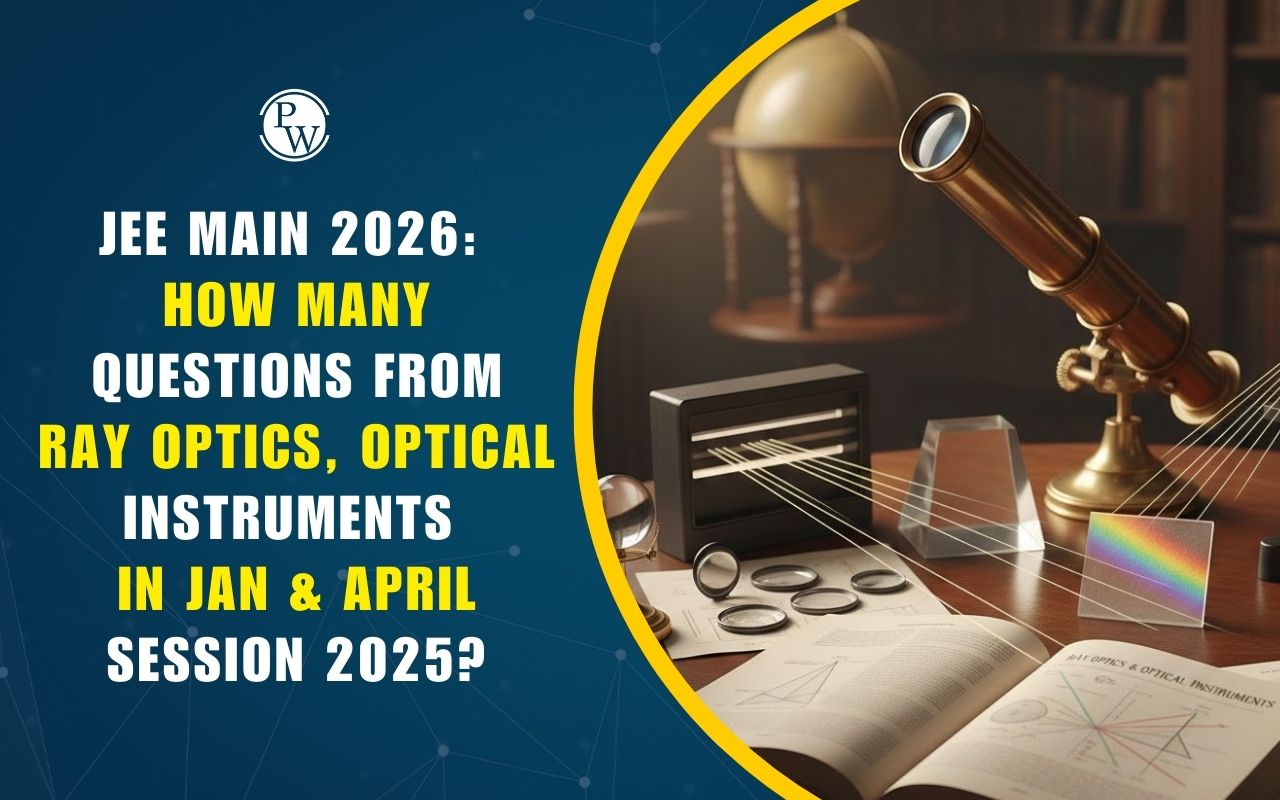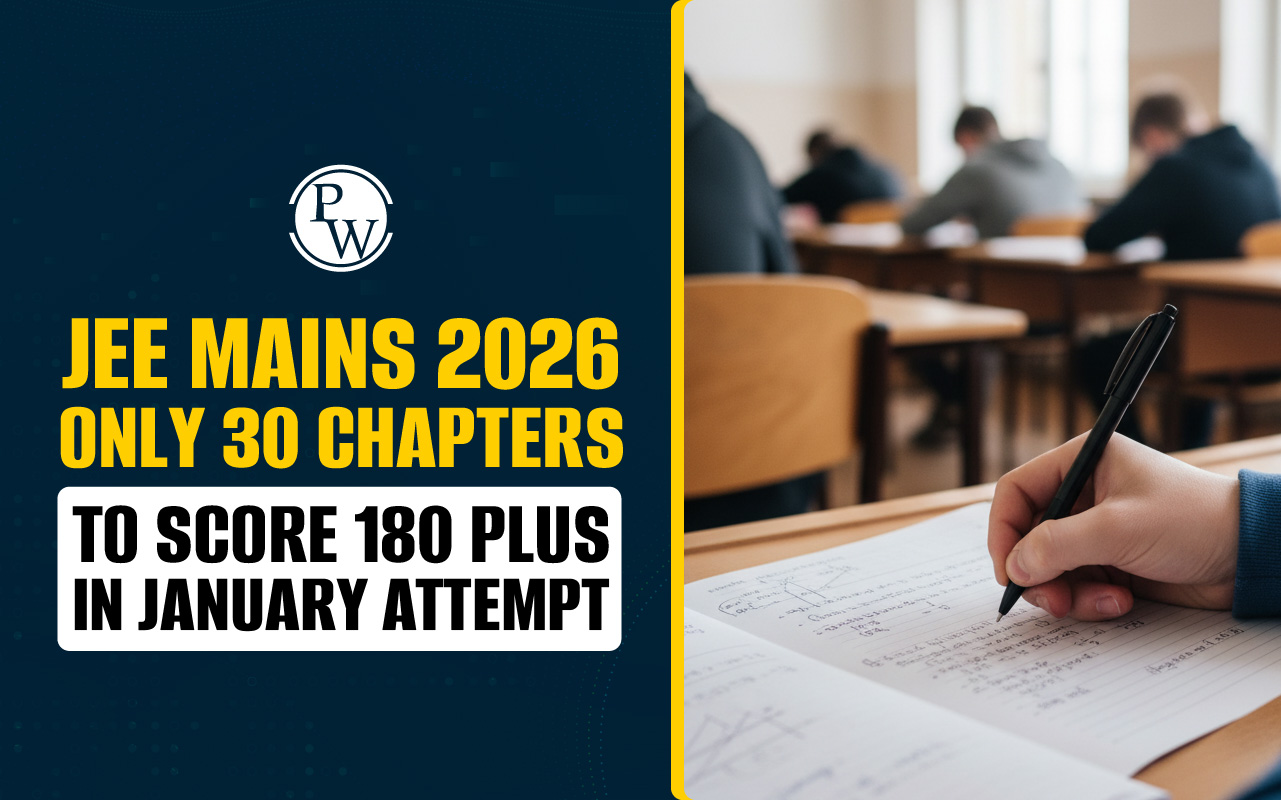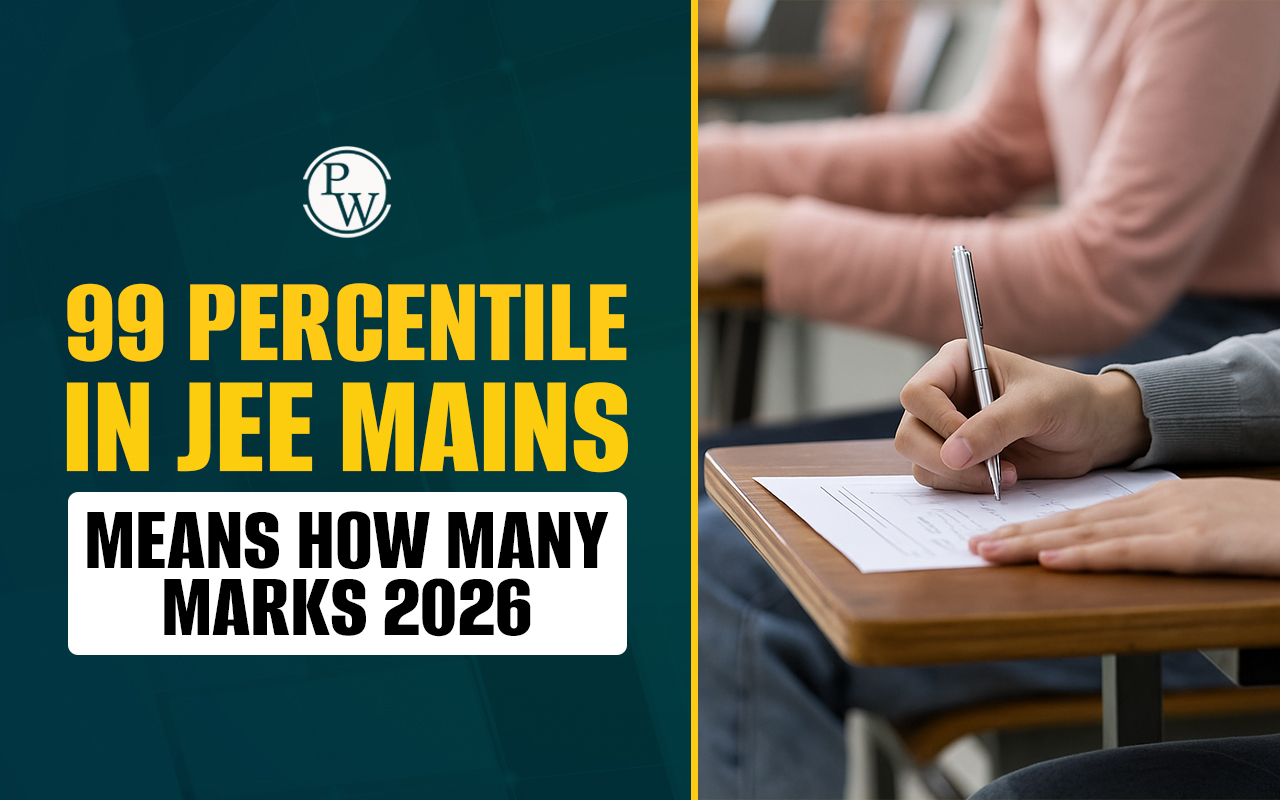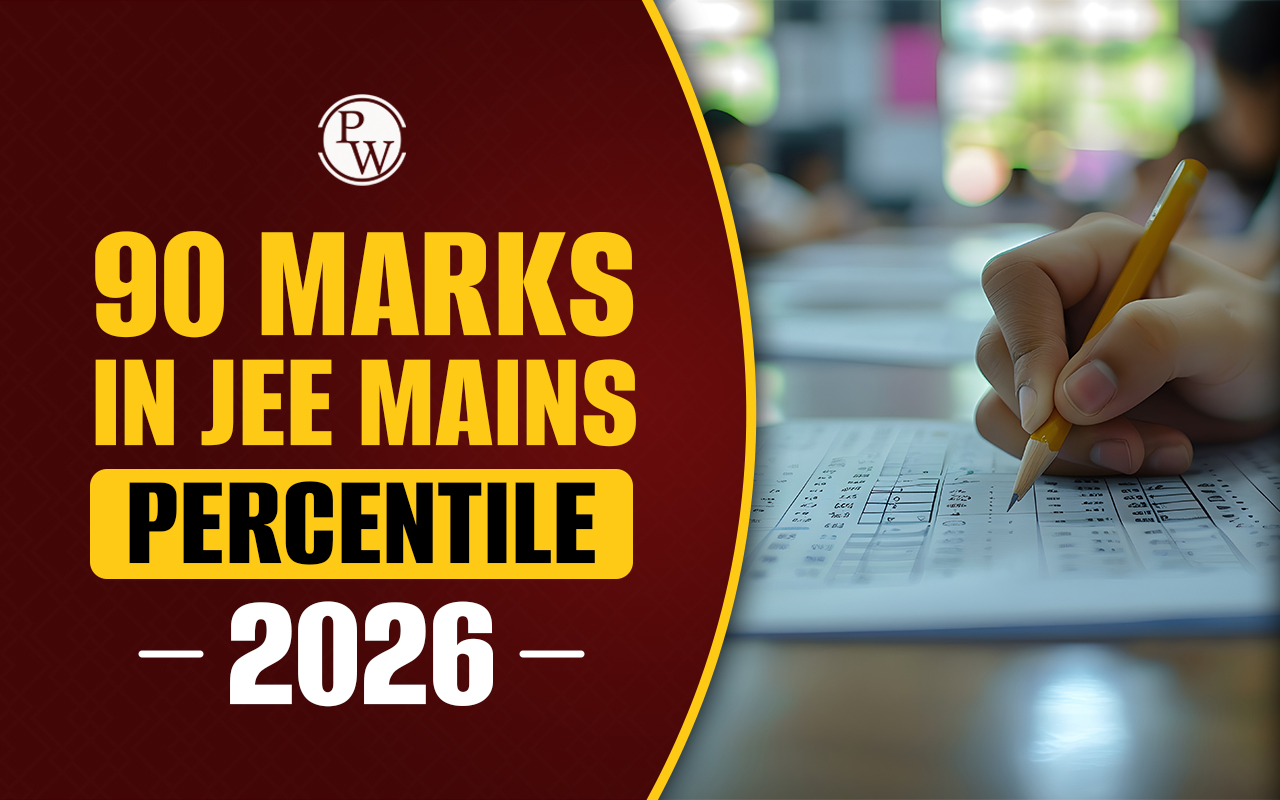
Ray Optics JEE Questions: The Ray Optics chapter plays an important role in the JEE Main Physics syllabus through its study of light's straight-line travel and its interaction with lenses and prisms followed by reflection from mirrors. Students must give a close shot for the Ray Optics Chapter of JEE because it checks conceptual clarity and problem-solving ability. Thus, it’s indispensable to be acing it for JEE Main as well as JEE Advanced.
As per the JEE Main exam pattern, the Ray Optics Chapter makes up for about 5–7% of the Physics portion. For example, JEE Main 2025 question 19 (April session) and question 23 (January session) were based on the Ray Optics Chapter.
Ray optics JEE Mains questions practice, solving JEE Advanced optics questions, and revision of important ray optics PYQs JEE based on the JEE Main previous year question papers, make students work on their concepts, develop speed and get exposure to the JEE question style. When they keep practicing, they can be assured of their ability to ace both simple and tricky questions.
Ray Optics JEE Questions Overview
JEE aspirants should focus on Ray Optics JEE questions chapter as it is high-yield and concept-heavy. Ray optics JEE Mains questions are mostly formula-based or straightforward numerical problems, while JEE Advanced optics questions often have multiple concepts combined into a single problem. These questions demand reasoning and careful calculations.
One should also look at the JEE previous year question papers to understand the JEE Advanced exam pattern and the types of questions that are frequently asked. Practicing important ray optics PYQs JEE is beneficial in two ways: it helps you understand the JEE exam pattern, and it can also help you avoid mistakes during the exam. This chapter also helps with related topics in Physics, such as Wave Optics and Modern Physics.
Practice Ray Optics JEE Questions
To prepare effectively, students should solve a variety of problems, including those from JEE previous year question papers. Here are some Ray Optics JEE Questions for students to practice:
Single Correct Type Questions
1. Two transparent slabs have the same thickness as shown in figure. One is made of material X of refractive index 1.5. The other is made of two materials Y and Z having thicknesses in the ratio 1:2. The refractive index of Z is 1.6. If a monochromatic parallel beam passing through the slabs has the same number of wavelengths inside both, the refractive index of Y is
A. 1.1
B. 1.2
C. 1.3
D. 1.4
2. A tank contains a transparent liquid of refractive index n the bottom of which is made of a mirror as shown. An object O lies at a height d above the mirror. A person P vertically above the object see O and its image in the mirror and finds the apparent separation to be
A. 2d
B. 2d/(n – 1)
C. 2d/n
D. d/(1 + n)
3. A parallel beam of light is incident on a spherical drop of water (μ = 4/3). Consider refraction of light at air-water interface, then reflection at water-air boundary (of course there will be refracted light energy in air as well), followed by refraction at water-air interface. Path of a typical ray refracted at A, then reflected at B and finally refracted at C has been shown in the Figure. Find the maximum value of angle δ.
A. 40°
B. 80°
C. 120°
D. 60°
4. The image of point P when viewed from top of the glass slabs is
A. 2 cm above P
B. 0.5 cm above P
C. 0.5 cm below P
D. 1 cm above P
5. A point object is placed at a distance of 0.3 m from a convex lens of focal length 0.2 m cut into two equal halves, each of which is displaced by 0.005 m, as shown in figure. If C1 and C2 be their optical centres then,
A. an image is formed at a distance of 0.6 m from C1 or C2 along principal axis.
B. two images are formed, one at a distance of 0.6 m and other at a distance of 1.2 m from C1 or C2 along principal axis.
C. an image is formed at a distance of 0.12 m from C1 or C2 along principal axis.
D. two images are formed, one at a distance of 0.6 m and other at a distance of 0.6 m from C1 or C2 along principal axis.
6. Two identical thin isosceles prisms of refracting angle A and refractive index μ are placed with their bases touching each other and this system can collectively act as a crude converging lens. A parallel beam of light is incident on this system as shown. The focal length of this so called converging lens is
A. f = h/μA
B. f = h/A
C. f = h/(μ – 1)A
D. f = μh/(μ – 1)
7. A right-angled prism (45°–45°) of refractive index n has a plate of refractive index m (m < n) cemented to its diagonal face. The assembly is in air. A ray is incident on AB as shown. If the ray strike the diagonal face AC at critical angle then,
A. sin i = n/m
B. sin i = n/n1
C. sin i = √(n² – m²)/2
D. sin i = √(n² – m² – n1)/√2
8. The slab of a material of refractive index 2 shown in figure has a curved surface APB of radius of curvature 10 cm and a plane surface CD. On the left of APB is air and on the right of CD is water with refractive indices as given in figure. An object O is placed at a distance of 15 cm from pole P as shown. The distance of the final image O2 from P, as viewed from the left is
A. 20 cm
B. 30 cm
C. 40 cm
D. 50 cm
Watch Ray Optics JEE Question Practice Video on YT
Ray Optics JEE Questions PDF with Solution
PW provides a practice Ray Optics JEE Questions PDF with answers and detailed solutions. This PDF is an all-in-one guide that is good for JEE aspirants looking for practice questions. This PDF can be used for both long-term preparation and last-minute revision, helping you solve questions similar to the ones you will encounter in the actual exam.
Ray Optics JEE Questions PDF with Solution
Practice with Free PDF
Ray Optics JEE Questions FAQs
Q1. How many questions are from Ray Optics in JEE Mains?
Q2. Are the JEE Advanced level optics questions more challenging than those in the Mains?
Q3. Why solve these important ray optics PYQs JEE?
Q4. How does referring to JEE previous year question papers for optics help the students?

